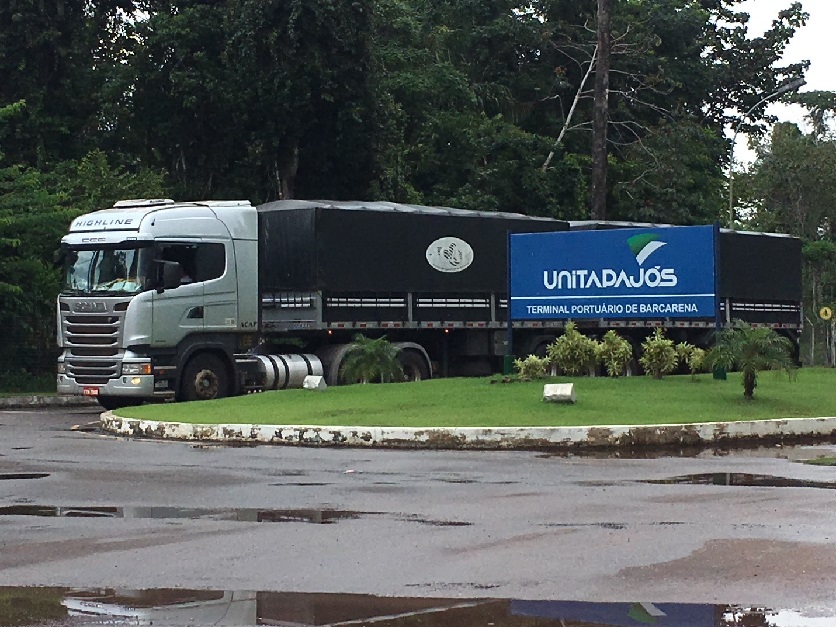(Editor’s note: This is the fourth in a new series of Agri-Pulse in-depth stories, “Export or Bust,” dealing with the challenges and opportunities for U.S. agriculture when it comes to selling more commodities and value-added products to overseas customers.)
You won’t find any tourists in the muddy, mosquito-ridden town of Barcarena in Brazil’s state of Pará, but you can’t miss the almost constant parade of trucks pulling in and out of port facilities under the scorching sun or torrential rainfall on the country’s northern coast.
Leaking soybeans and corn, tarp-covered trucks try to avoid potholes the size of refrigerators as drivers are either delivering the crops to the port or taking them off barges to silos where the grain and oilseeds will wait before being shipped to Mexico, China, Europe and elsewhere around the globe.
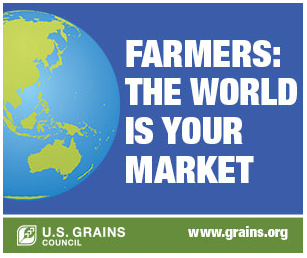 It's all part of what Odilson Luiz Ribeiro e Silva, head of international affairs for Brazil’s Ministry of Agriculture, calls Brazil’s agricultural revolution. The country, fueled by abundant land and rising international demand for soybeans and corn, is bringing together improved production and transportation across South America’s largest country. Slowly but surely, crops are making their way up rivers, roads and railroad tracks to ports now dotting Brazil’s 4,560 miles of coastline.
It's all part of what Odilson Luiz Ribeiro e Silva, head of international affairs for Brazil’s Ministry of Agriculture, calls Brazil’s agricultural revolution. The country, fueled by abundant land and rising international demand for soybeans and corn, is bringing together improved production and transportation across South America’s largest country. Slowly but surely, crops are making their way up rivers, roads and railroad tracks to ports now dotting Brazil’s 4,560 miles of coastline.
It’s a movement that’s helping Brazil in an effort to beat the U.S. at its own game of leveraging strong production and efficient transportation infrastructure to deliver its crops around the globe.
But Brazil is not alone in stepping up its export “game” in an effort to capture more market share. Neighboring Argentina also set sights on U.S. corn and wheat markets. And since 2000, the major agricultural countries of the former Soviet Union—Kazakhstan, Russia, and Ukraine (the KRU) —have become a large grain-exporting region, according to USDA.
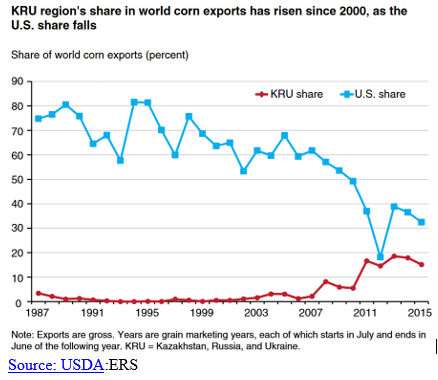
“The floor of competition rises every day and it’s been that way for a long time,” emphasized Tom Sleight, CEO of the US Grains Council during the Agri-Pulse Ag and Food Summit. “I still think U.S. agriculture is still highly competitive. In terms of our technology, our management, our use of precision agriculture, our ability to customize supply in terms of what the customer wants – how they want it, when they want it, what form they want, our grain standards system, our contract sanctity - everything about the US agriculture system is still top of the line.”
However, Sleight says it’s going to require new investments in U.S. infrastructure, technology, and management for the U.S. to remain a market leader.
“We need to sharpen that edge every single day because we have people biting at our heels.”
Adding uncertainty to the U.S. leadership position: The Trump Administration’s decisions to renegotiate the North American Free Trade Agreement (NAFTA) and threaten China and other countries with tariffs on steel, aluminum and other products – actions that have prompted retaliation against U.S. sorghum exports and potentially, a long list of other farm products.
In the meantime, other countries and trading blocs have acted to fill some of the gaps.
Weaving the international web of trade
Brazil is already part of Mercosur, a multilateral trade alliance with Argentina, Paraguay and Uruguay, and negotiators from all four of those countries are in talks with the European Union (EU) - a bloc that the U.S. is currently butting heads with over steel and aluminum.
“A future EU-Mercosur Association Agreement should boost trade integration among the Mercosur countries and create new opportunities for trade and investment with the EU by removing tariff and non-tariff barriers to trade and (foreign direct investment),” according to a European assessment of negotiations.
Brazil is the largest supplier of agricultural commodities to the EU, a market of 28 countries that U.S. farmers would like a much bigger share of.
And whereas Brazil is doing its best to surpass U.S. production and transportation systems, the EU is easily outmaneuvering the U.S. on the international front, nailing down new trade agreements and expanding markets in Asia, South America and North America.
After nailing down new free trade agreements with Canada and Japan, the EU signed off on a revamped pact with Mexico last month that has U.S. farmers worried about lost market share.
While the U.S. negotiates with Mexico and Canada to rewrite NAFTA, the EU has swooped in and finished trade pacts with both of those countries. And in both cases the EU has convinced them to lower tariffs and erect barriers to U.S. products like cheese.
The Canada-EU trade pact emboldens Europe’s efforts to restrict the use of food names like Muenster cheese, prohibiting the U.S. from selling those products without renaming them.
The new EU-Mexico accord will spread those restrictions even further in North America, says, Jim Mulhern, president and CEO of the National Milk Producers Federation.
“This means that our exporters now face fewer opportunities for their products, and trading partners are emboldened to see how much further they can push the boundaries of creating nontariff trade barriers,” Mulhern said, reacting to the signing of the EU-Mexico pact.
But EU officials are elated.
"With this agreement, Mexico joins Canada, Japan and Singapore in the growing list of partners willing to work with the EU in defending open, fair and rules-based trade," European Commission President Jean-Claude Juncker said.
EU Agriculture Commissioner Phil Hogan added: "This agreement proves yet again the value of the EU leading from the front globally … This deal is very positive for our agri-food sector, creating new export opportunities for our high-quality food and drink products, which in turn will support more jobs and growth, particularly in rural areas."
It’s not just the budding ties between South America and Europe that are hobbling U.S. exports. The U.S. would like to sell a lot more wheat to Brazil - a major importer of the grain - but Brazil continues to favor its Mercosur neighbor, Argentina.
Preferential Mercosur tariffs, proximity and abundant harvests continue to assure that Argentina will not be giving up its share of the Brazilian import market anytime soon. Argentina is projected to reap a record-high wheat harvest this year of 20 million tons, according to a new analysis by USDA’s Foreign Agricultural Service.
That harvest is expected to spur record high exports of 14.2 million tons, about 40 percent of which will go to Brazil.
Asian countries take notice
In March, South Korean Prime Minister Lee Nak-yon agreed with Brazilian President Michel Temer to start formal negotiations for a free trade deal between South Korea and the Mercosur bloc by June. The pact would likely be designed to increase South Korean exports of consumer electronics and auto-parts and boost Mercosur's shipments of corn, soybeans and other grains.
At the same time, China is moving quickly to expand its influence in the Pacific Rim and around the globe. While the U.S. was severing ties with the Pacific Rim by withdrawing from the Trans-Pacific Partnership (TPP) last year, China continued to negotiate a separate multilateral pact.
China’s Regional Comprehensive Economic Partnership (RCEP) with the Philippines, Japan, Australia, India, South Korea, New Zealand, Brunei, Burma, Cambodia, Indonesia, Laos, Malaysia, Singapore, Vietnam and Thailand isn’t the country’s only outreach plan designed to counter U.S. influence. Chinese President Xi Jinping proposed his Belt and Road Initiative (BRI) in 2013 to build new trade and infrastructure networks.
So far about 80 countries have signed up as part of China’s efforts to diversify its sources of food, technology and energy trades, according to recent presentation by Erin Ennis, senior vice president of the US-China Business Council.
And China has invested heavily in Brazil by funding projects such as a new “super port” in Rio de Janeiro, which officials say is being used to send mostly petroleum products to Chinese buyers.
In March, a consortium led by the China Communications Construction Company (CCCC), in association with Brazilian companies WPR and Lyon Capital, began expanding the port of São Luís in the northeast state of Maranhão, Xinhua news agency reported.
Port construction is expected to take four years, cost $245 million (US), create 4,000 jobs and allow Maranhão to increase its capacity to export grain to Asia, Europe and Africa.
China is also rapidly increasing the amount of soybeans it buys from Brazil, some of which goes through São Luís.
Brazil shouldn’t be seen as a threat to farmers in the U.S., once the largest soybean producing and exporting country in the world, Brazilian Agriculture Minister Blairo Maggi told Agri-Pulse in an interview, but that may be impossible as the country continues to peel off more of the U.S. market share in China.
“Yes, there is a premium for Brazilian soybeans because China wants them,” Maggi said. “It’s an incentive for Brazilian farmers to plant more …”
The new threat of Chinese tariffs on U.S. soybeans is cutting into U.S. exports, but if there’s one thing American farmers can count on it's that Chinese livestock producers will be forced to continue buying from them because Brazil can’t steal the entire market.
At least not yet. Brazil already supplies about 56 percent of China’s demand and that figure is expected to grow this year as U.S. and Chinese negotiators continue to square off over steel, aluminum, solar cells, washing machines and intellectual property theft.
The threat of Chinese retaliatory tariffs on U.S. soybeans – a whopping 25 percent – continues to scare away Chinese buyers from U.S. suppliers and make Brazilian imports even more attractive.
Marcos da Rosa, president of the Brazilian Association of Soybean Producers (APROSOJA) also sat down for an interview with Agri-Pulse and said he expects Brazil to export at least 65 million tons of soybeans to China for the 2018-19 marketing year, a 20 percent increase from 54 million tons in 2017-18.
“Chinese demand is increasing and they like the higher protein levels in Brazilian soybeans,” he said, dismissing the possibility of a trade war between the U.S. and China. “Trump will listen to the farmers and prevent China from putting the 25 percent tariff on U.S. soybeans.”
But U.S. farmers aren’t so confident.
“We all know the numbers— China imported $13.9 billion of U.S. soybeans in 2017, 60 percent of total U.S. exports and nearly one out of every three rows of annual soy production,” said American Soybean Association President John Heisdorffer in a recent message to the group’s members. “A 25 percent tariff on U.S. soybean shipments to China will have a lasting effect on soy growers and the rural economies that depend on them.”
And Brazil is more than willing to forego domestic demand in order to supply China and the premiums it is willing to pay to avoid tariffs.
“It’s possible that Brazil will sell too much to China and then have to import from the U.S. to make up for domestic demand,” da Rosa said, speaking to Agri-Pulse at an exclusive luncheon hosted by a group representing farm-state lawmakers in an upscale neighborhood of Brasilia where lobbyists and lawmakers often gather.
Maggi agreed, saying there is a precedent for Brazil over-selling and then being forced to import from the U.S.
Meanwhile, China is reaching out to the rest of the world through new free trade agreements – a trend that’s forging new tariff-reducing ties between the EU and Mexico, Japan and Canada, the EU and Japan and China and the rest of the Pacific Rim. Largely absent in the international arena is the U.S., which withdrew from the Trans-Pacific Partnership after the Trump administration announced it had no interest in multilateral trade deals and continues to threaten to pull out of the North American Free Trade Agreement.
The U.S. farm sector continues to fight U.S. protectionism, banding together in groups like Americans Farmers and Families and Farmers for Free Trade in order to amplify their concerns to the White House and Congress.
It’s a fight on several fronts. Not only are U.S. farmers frustrated over the lack of new free trade agreements, but the Trump administration’s aggression toward China could give production powerhouses like Brazil the incentive to grow even faster and become more competitive.
Brazil – the land of untapped potential
American farmers take heed: Brazil is the largest soybean producer and exporter in the world, but the South American agricultural juggernaut is not operating anywhere near its full potential. Brazilian ag economists are scrutinizing every available acre in the country that’s bigger than the continental U.S. and calculating every bushel that could be squeezed out of the vast untapped land.
It won’t happen next year or even in the next five years, but Brazil could easily double the 85 million acres that are now growing soybeans, Maggi said in an hour-long interview at his eighth-floor office in Brasilia, the country’s capital city.
Soy isn’t the only crop farmers are planting more of, Maggi stressed. Corn production is increasing almost just as quickly because of Brazil’s ability to double crop. Almost every Brazilian who plants soybeans as their main crop, plants a second crop of corn – called the “safrinha.”
“The safrinha is getting bigger every year,” Maggi said. “The more soybeans (that farmers plant), the bigger the safrinha gets. The big difference for us is that we can do two crops.”
Acreage planted with corn has expanded by about 50 percent over the last 15 years, according to a Foreign Agricultural Service (FAS) report, and that’s mostly due to Brazil’s growing second crop behind a soybean harvest.
Overall, production was down last year in Brazil, but that was mainly due to low prices and a reduction in corn planting for the first crop.

Agri-Pulse's Bill Tomson interviews Brazilian Agriculture Minister Blairo Maggi
Maggi, pointing at colorful charts, explained that while more than 66 percent of undeveloped land in Brazil is off limits for planting because it is considered “environmentally sensitive” and protected by the federal government, farmers are still only planting on a small portion of what’s available to them.
“What we’re doing is an integration of farming and ranching,” Maggi said. “We will keep the same number of cattle – about 220 million head – but integrate their pasture land into farming.”
By doing that, the percentage of land available for crop farming could increase from 7.5 percent to more than 14 percent, Maggi said.
But before that happens, Maggi and da Rosa agree, the pace of investment in Brazil’s infrastructure needs to increase.
One of the areas of increased investment over the past several years has been on Brazil’s rivers, especially in the northern part of the country. The construction of barge ports by companies like Bunge and ADM are now helping take millions of tons of soybeans and corn up rivers to coastal ports like the ones in Barcarena where they are loaded on ocean-going vessels.
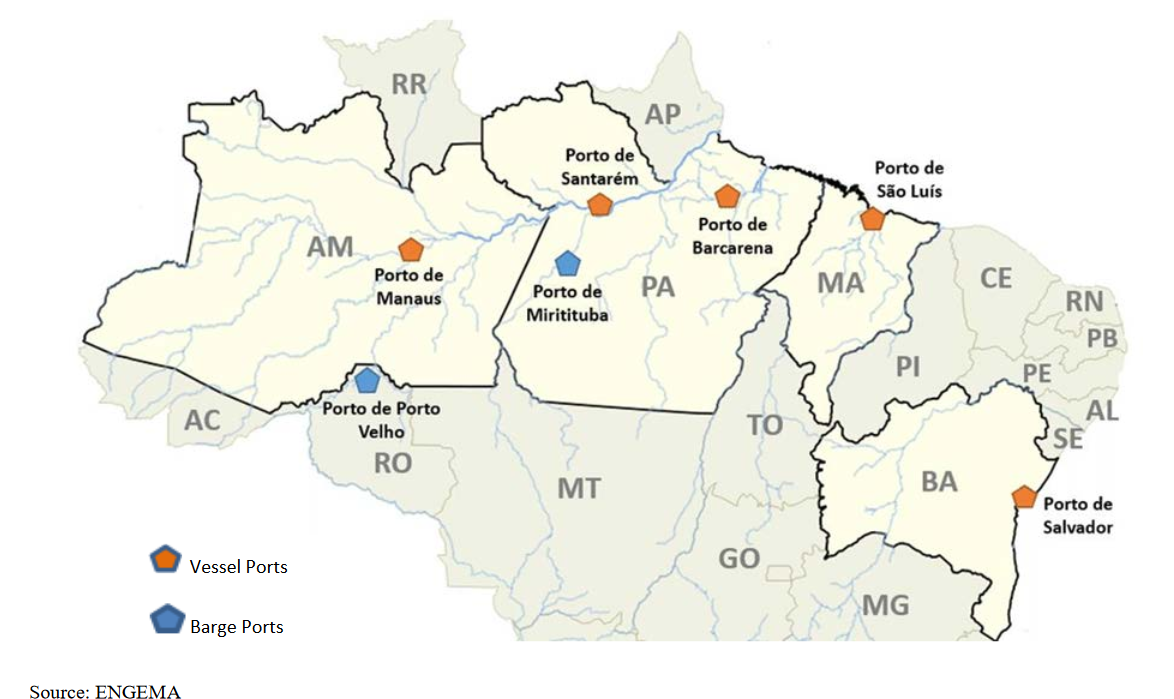
For example, Miritituba, a small city on the Tapajós River, has received over $1.5 billion in investments since 2014 and is home to six new privately owned terminals that use barges to move commodities along the river, according to the USDA’s Foreign Agricultural Service. This gateway was created to facilitate the export of the increasing production in northern Mato Grosso and improve export competitiveness for markets in Europe, Mexico, the Middle East, and Asia. These terminals are projected to move roughly 4.5 mmt of corn and soybeans in 2017 by barge to ocean ports in Barcarena and Santarem. The volumes out of Miritituba are expected to reach 11 mmt annually by 2021.
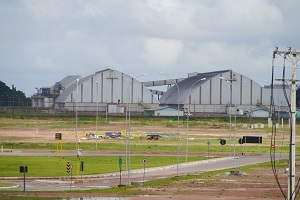
Storage at the Hidrovias port in Bacarena
Mato Grosso is the largest agricultural state in Brazil now and investors are continuing to turn more pastureland into farmland. The state has always had fertile land and good growing weather, but it’s the development of the Tapajós River that’s helped spur the investment.
Farmers, rather than sending their corn and soybeans on leaky trucks along crumbling roads all the way to southern ports, can now deliver the crops to barges at the southern tip of the Tapajós in the town Miritituba to the north, in the state of Para.
“Mato Grosso produces 60 million tons of soybeans and corn,” said Maggi, who is from the state and farms there himself. “About half of it is going north. The barges go from Miritituba to Barcarena and then from there to China or anywhere else in the world … The infrastructure in Brazil is growing fast.”
About 130 fulltime employees of the Bunge-Amaggi joint venture in Miritituba load about 3.5 million tons of soybeans and corn onto barges to make the 1,100-kilometer (about 684 miles) trip up the Tapajós River to Barcarena every year. Once the fleet of 92 barges arrives in Barcarena, the crops are loaded onto ocean-going vessels.
It’s just one of the operations that keeps spurring farmers in Mato Grosso and other states to plant more every year, but the situation is still far from ideal. Producers still have to get their soybeans and corn to Miritituba and, so far, the only way is by truck on the unfinished BR-163 highway. It’s essentially a two-lane road pitted with potholes and the final 100 kilometers is still unpaved.
Dirt roads can quickly turn to mud and the mixture of heavy rains and searing sun creates stretches of roads that dip and rise that can make it impossible for trucks to pass.
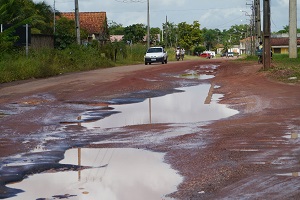
A treacherous road leading to northern Brazilian ports
“Despite all the efforts and good intentions of the government, we still do not see when we will have the road 100 percent paved,” officials at the Bunge-Amaggi barge port told Agri-Pulse in e-mail correspondence. “Therefore, the BR-163 will continue to be the great brake on grain transportation in the north and, of course, this will cause immeasurable damage to the entire Brazilian agribusiness chain, with the loss of foreign exchange and taxes to the country.”
The barge ports in Miritituba have the potential to ship as much 15 million tons of soybeans and corn per year, but only about half that amount is being sent north, the officials said.
Brazil’s agriculture minister is well aware of the problem and he told Agri-Pulse that he is confident that the road can be finished in 2020. The government originally hired the wrong companies for the job, he said, but bureaucratic red tape has snarled the process of replacing them with more competent builders.
Getting on the Grain Train
Even when BR-163 is complete, it will still just be a two-lane road that can easily be shut down by just one of the many accidents that occur every year. That’s why Brazilian lawmakers are pushing hard to get presidential approval and environmental clearances to build 621 miles of new railroad track from the heart of farming country in Mato Grosso to the ports of Miritituba in the northern state of Pará.
Brazilian Sen. Paulo Rocha, who sat down with Agri-Pulse for an interview in his Senate office in Brasilia, said there is overwhelming support in Congress for the project, especially now that there is talk of adding passenger cars to the trains that would carry up to 42 million tons of soybeans, corn, fertilizer, sugar, ethanol and petroleum per year.
Rocha said getting federal and state approvals for the tracks has been tricky because they would go through environmentally sensitive and federally protected lands, but most of that work has already been done.
He expects final approval to begin construction by the end of this year and predicted completion in four to five years.
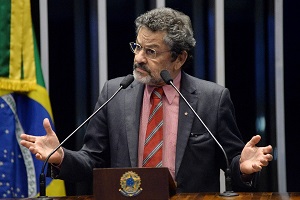
Brazilian Sen. Paulo Rocha of Pará
The project, called Ferrogrão – the translation is literally “Grain Train” – is “very important for the future of Brazilian agriculture,” Maggi said and predicted that it would knock between $20 and $30 off the price of a ton of soybeans by reducing transportation costs.
It’s projects like Ferrogrão and new northern ports that spur investors to develop more farmland and plant more soybeans, Maggi said, but he also stressed passionately that the country would not repeat past mistakes of trying to increase production through subsidization.
“About Brazil’s ability to double soybean production – we can do that, but Brazil will not deteriorate this market,” he said emphatically. “We will rise, but as a function of world demand … We have to do this smart, knowing that we can significantly increase production, but only if the market allows. We will not simply increase production because that will decrease prices. We won’t win. You won’t win. Nobody will win.”
For more news, go to: www.Agri-Pulse.com

